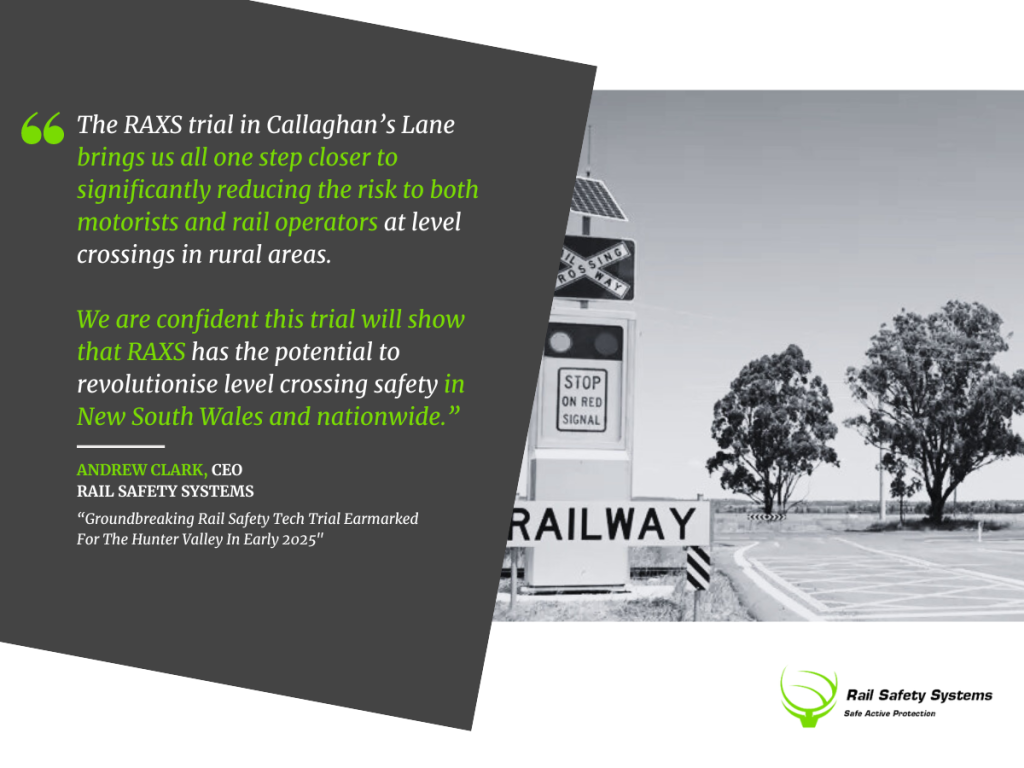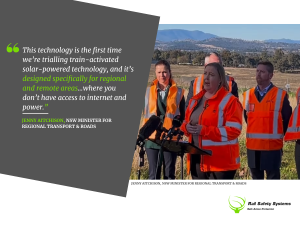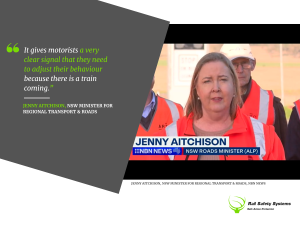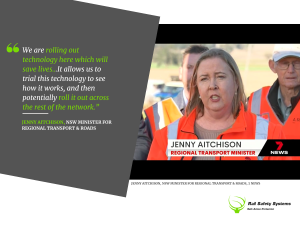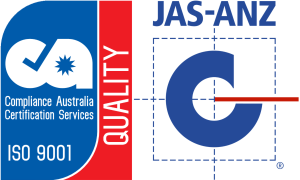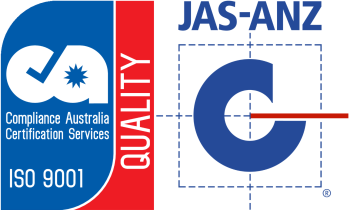Advanced rail safety technology will soon be installed at a level crossing in the Hunter Valley to address the serious safety risks posed by passive signage in remote settings where road meets rail.
Rail Safety Systems (RSS) has secured a contract with Transport for New South Wales (TfNSW) to trial its cutting-edge Rail Active Crossing System (RAXS) early next year at Callaghans Lane level crossing in Quirindi, within the Hunter Valley.
Scheduled to commence in February 2025, the six-month trial will introduce RAXS technology, which features a modular low-cost wireless design that quickly transforms passive level crossings into active sites.
RSS CEO Andrew Clark said the initiative was a part of a broader effort to secure type approval for the system on the Australian Rail Track Corporation (ARTC) network, paving the way for its wider adoption nationally as part of the federal and state government push for safer level crossings in remote areas.
“Securing this contract with TfNSW is a testament to all parties’ commitment to rail safety through innovation,” he said.
“The RAXS trial in Callaghan’s Lane brings us all one step closer to significantly reducing the risk to both motorists and rail operators at level crossings in rural areas.”
Mr Clark said RAXS’ advanced digital technology integrates flashing lights and wireless train-activated signage, ensuring motorists receive timely warnings about approaching trains, reducing the likelihood of accidents.
“Where traditional treatments aren’t viable due to a range of factors, like geography, lack of access to power and other infrastructure hurdles, our technology is an obvious and affordable solution.
“We hope this trial will accelerate the adoption of tech-enhanced activated level crossings to address the real concerns around safety voiced by affected communities in rural and regional areas nationally,” he said.
RSS’ role across the entire project lifecycle — from design, manufacture, installation and maintenance, through to the reporting to the Rail Infrastructure Manager and government bodies — reflects their position as a frontrunner in the evolution of rail safety.
Through this trial, RSS hopes to not only fortify rail crossing safety locally but also support the national initiative to standardise safety technology across all the states.
“We are confident this trial will show that RAXS has the potential to revolutionise level crossing safety in New South Wales and nationwide,” Mr Clark said.
Transport for NSW Media Statement: Quirindi level crossing to trial innovative safety technology

